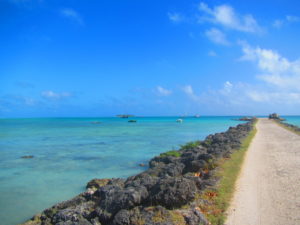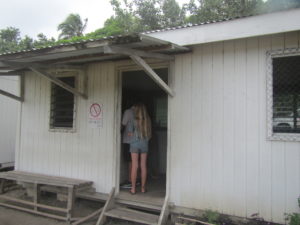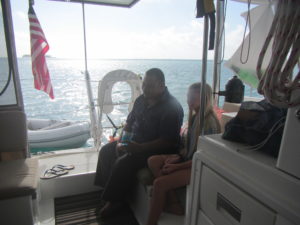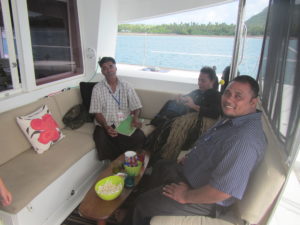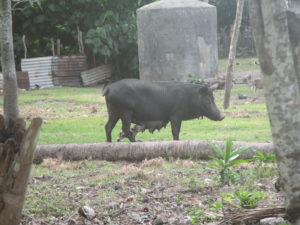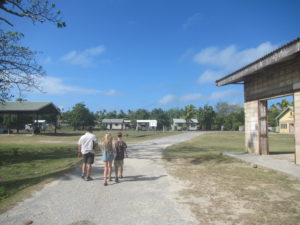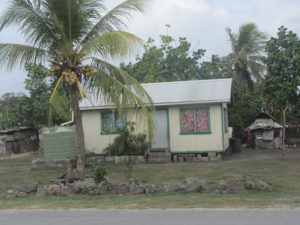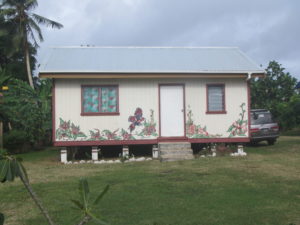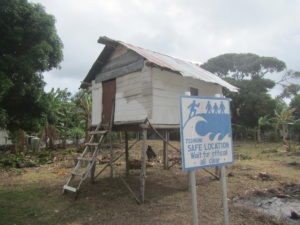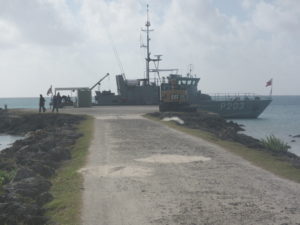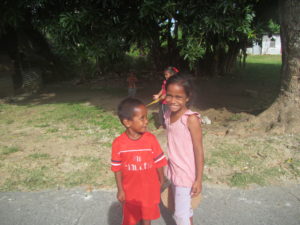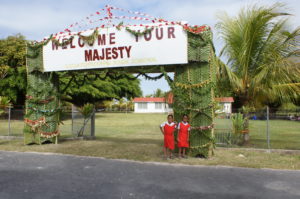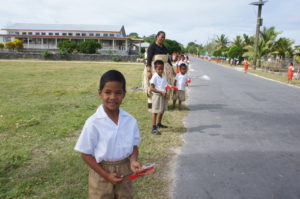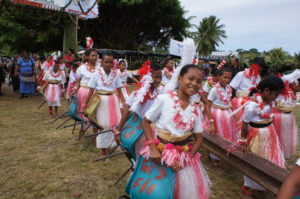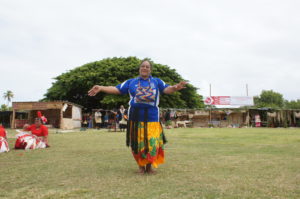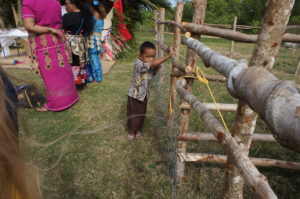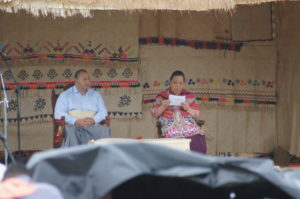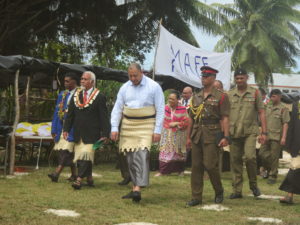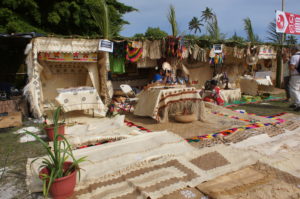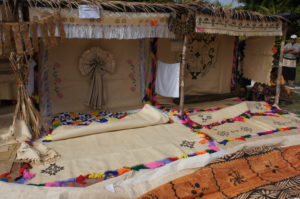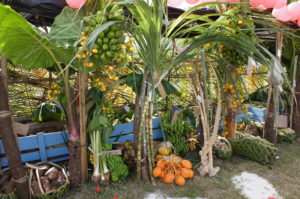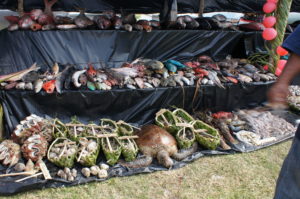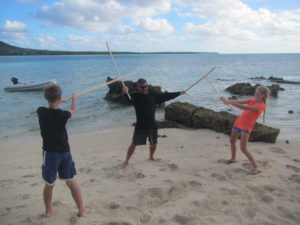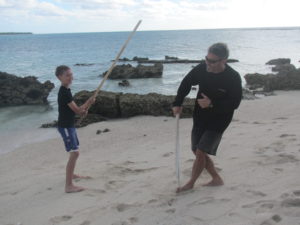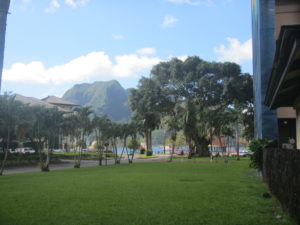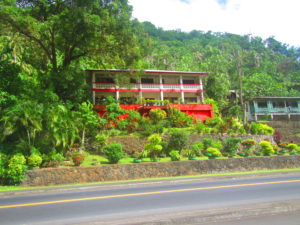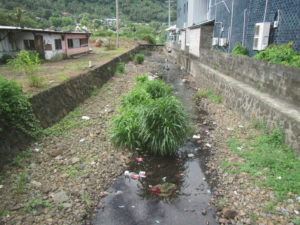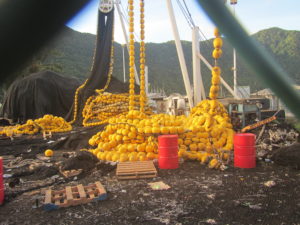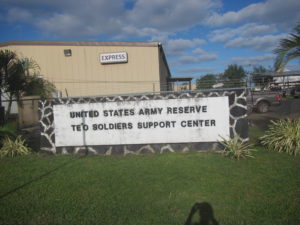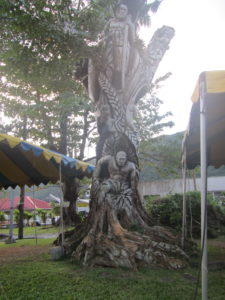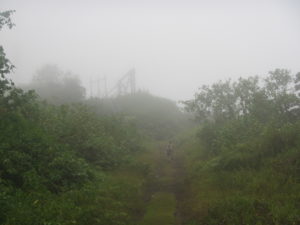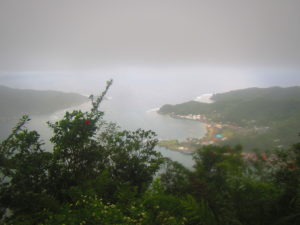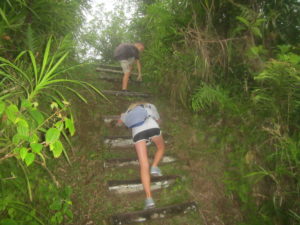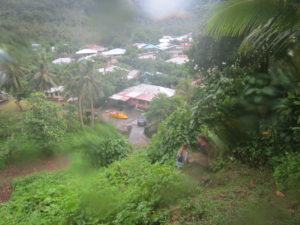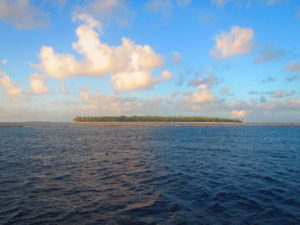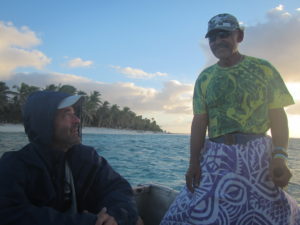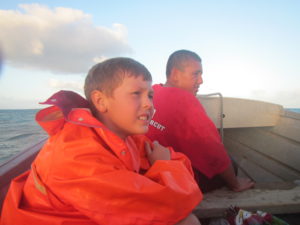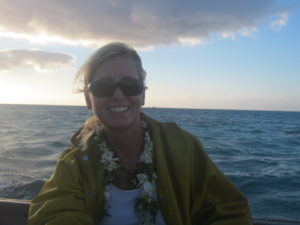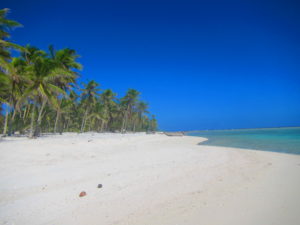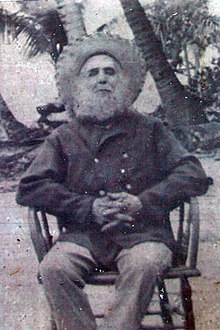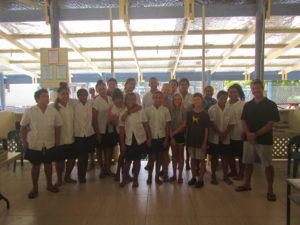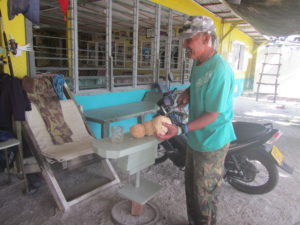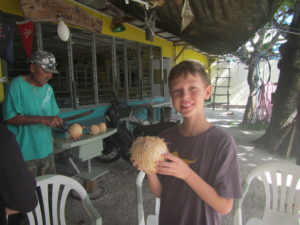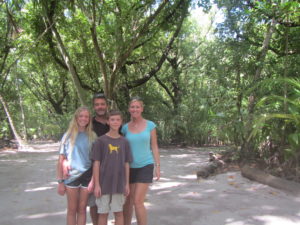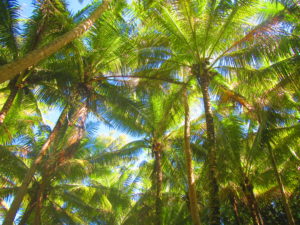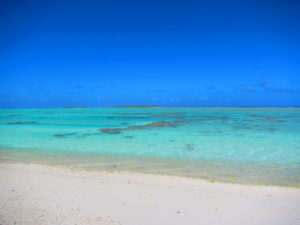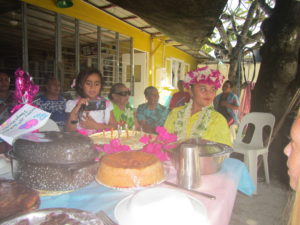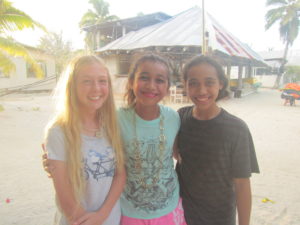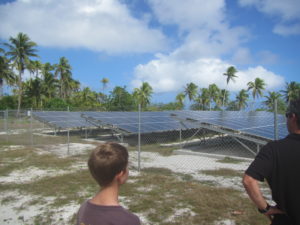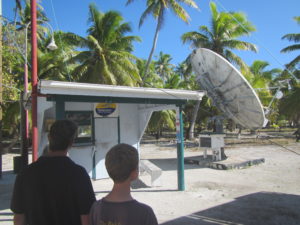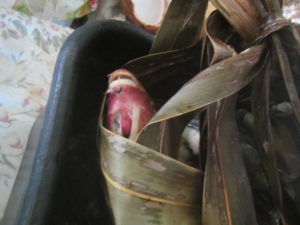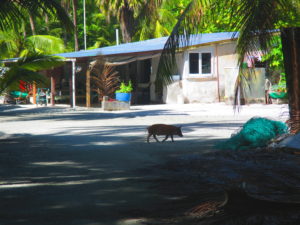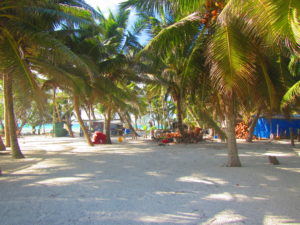Niue
A photo of Niue Island

Craig on Watch from Palmerston to Niue
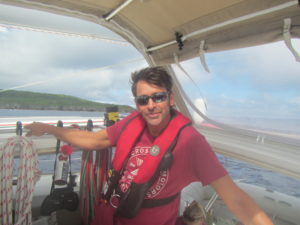
After a three night sail from Palmerston, we arrived into Niue, an island that is a New Zealand protectorate and uses New Zealand currency (which is a great exchange rate for the US dollar right now!). Niue was such a pleasant surprise. I was expecting little from the island and ended up enjoying it immensely. In a nutshell, we spent time scuba diving, hiking, exploring caves (via land and water), playing mini-golf, and eating Rotis at Gill’s Indian Restaurant. As soon as we were cleared into the country, we headed to the Yacht Club for a cold beer. Here, we hung out and met a couple from New Zealand who were there on vacation (Ann and Barry from Dunedin), and then continued on for dinner at a Japanese/Pizza restaurant (strange combination served there) with Craig. We had a fun night!
Waiting patiently for dinner–we were hungry!
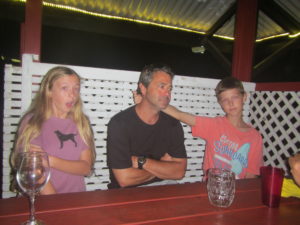
One interesting thing about Niue was that you had to use a crane to pull your dinghy out of the water every time you went ashore. Even the dive boats used this system each time they took people out diving. This is how it would work: We would motor over to the pier, Dan would let us all out to go up the ladder, we would grab the crane rope and give it to him so he could pull the hook to just above the dinghy, we would grab the crane control that would lower and raise the crane, Dan would hook up the crane to the dinghy lines, he would then hop out of the dinghy and we would lift it up and he would pull the rope that would pull the dinghy over the land. We would then lower the dinghy onto a handheld trailer and park it in a dinghy parking space. We couldn’t lift Dan IN the dinghy with the crane because the weight of the dinghy was not balanced with the (three) lines that connected to the crane. Over the course of the week we were there, we realized this system was not as irritating as it seemed, because it became a relatively quick process once you got it down. Unless…
–A local who is trying to be helpful yet knows nothing about boating (or physics) decides to keep control of the crane lever when you’re trying to pull up your dinghus. Yup, that can be terrible, as we found out… And of course, it had to happen on a day when Dan had a backpack with Ari’s and Ryan’s computers in it, so it was especially important to be careful. Mr. Local Man, however, did not bother to ask: “Do you want me to lift you in your dinghy?” or even: “Are you ready to be lifted?” Instead, Mr. Local Man just started lifting our dinghy out of the water without Dan expecting it, and as soon as the dinghy rose above the water, the imbalance threw Dan out. Luckily, Dan had the rope that swung the crane, so he was able to keep the backpack (mostly) out of the water and I was able to grab the backpack quickly. The backpack was wet, but miraculously, the computers stayed dry. Patagonia must make their packs water resistant; thank you Patagonia! Ryan had to turn off his touch screen because it was acting up, but otherwise, the computers survived. But, our lunchbox started floating away, Dan’s only pair of sunglasses fell to the bottom of the water, and Dan was now soaking wet. To make a long story short, Dan went back to Do Over to get a mask and snorkel (and dry clothes) so he could find his sunglasses. After about 40 minutes, he managed to find his sunglasses and a headlamp (that was still working)! It was amazing that he found his sunglasses, quite frankly. It was rough, the tide was going out and he had to anticipate where the current would have taken a lightweight item like a pair of sunglasses. He and Ariana finally arrived at the Yacht Club, fully successful, and all was better…
The crane for lifting dinghies and boats and the dinghy parking spaces
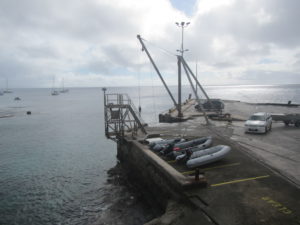
A Different Crane was Used to Load this Big Boy into the Water as a Transport from the Supply Ship that was Coming

(As an aside, salt water is a VERY harsh environment for all electronics. We’ve had to bury a tablet, two Kindles, and our IPad has perpetual touch screen issues. And the newest update is that Ryan’s T and Y keys on his computer work only sometimes after their temporary Niue dip.)
A beer at The Mini Golf Restaurant
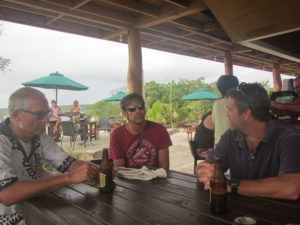
The View (of Our Boat) from the Mini-Golf Restaurant
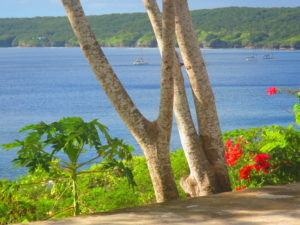
Niue is very deep right off the shore, so we could dive right underneath our boat. But, Niue had a bunch of really cool dive sites we couldn’t find on our own, so we decided to go with one of the dive shops on a dive called “Dome Cave.” The dive involved swimming down 10 meters (about 30 feet) and then swimming into a cave for about 30 meters (90 feet) and then you surface inside land, in a cave with stalagmites and stalactites. This particular dive guide also lets everyone take off their gear and explore the cave for a while before descending back into the water to continue the dive. This dive sounded very unique, even for people who have been diving for a long time. We knew Ariana would do great on this dive and we really wanted to be able to do the dive with her. The other dive shop said they could not take her because it was a cave and she was 13, but apparently there is some ambiguity in the Padi rules depending on whether it is a truly dark cave with no visibility of the entrance/exit versus a cave where the entrance/exit remains visible. In this cave, you could always see the entrance/exit in the water (the blue light of the ocean glowed), so it technically was not enclosed “cave diving.” And not to be those old people who say: “back in MY day” but the rules have changed over time for reasons that most likely pertain to money. Dan was certified to dive at 13, just like Ariana. At that time, 13 was the youngest you could be to become a certified diver, but once you were certified, you had no restrictions because of your age. You took the whole course just like an adult, you had to understand the physics of it just like an adult, and you had to demonstrate physically that you could do all that you needed to do to be a competent diver—just like an adult. Ariana had to do this too last year in the BVIs; it was a full course, just like an adult. However, on her certification, she is now considered a “junior” diver until she hits a magical age (I think the magical age is 15 now.)
Also, when I became certified 19 years ago, a recreational certified diver could dive to 100 feet. They have now changed it so that an adult recreational diver is supposedly only allowed to go to 60 feet for the first certification level, but of course, you can sign up for a separate costly course that would permit you to go deeper. Funny how things change.
The Trees on Niue That Look Less Tropical

Okay, now that I’m off my soapbox, I’ll get back to our dive. As we were riding over to the dive site in the powerboat, we saw a whale spout. When we got to the dive site, as soon as I rolled off the side of the boat into the water, I looked around under the water and saw a whole pod of dolphins swimming away. Sadly, by the time Dan and Ari were in the water, they were gone, so only the New Zealand college student (the only other diver besides our guide) and I saw them. The dive was pretty incredible. It was just as described where you descend and then go forward into the cave for about 90 feet and then you surface inside the land. There is an area where some fresh water hit the salt and the effect was very strange. The water was blurry; the visibility was still good, but it just became blurry and Ari said it made her feel a bit weird. I agreed. We had flashlights when we were inside the cave underwater and there were a ton of squirrelfish hanging out there. When we surfaced inside the island, we all took off our gear and walked around the dark cave. At one point, we turned off our flashlights and it was pitch black except for the slight glow of beautiful blue ocean water in one corner of the cave. We got to see a coconut crab in there as well, which apparently, is quite characteristic of Niue. Finally, it was time to get back into the water, descend and travel out of the cave, and continue through the natural chasms on the ocean floor. Many times on the dive, we were visited by the most venomous snake in the world—the Niue sea snake. They are quite commonplace in these waters, but luckily they are not aggressive. They are, however, quite curious and they would come close to you in the water—VERY close. At one point, one came out of deeper waters and ended up grazing Ari’s face in his efforts to swim by us. Another followed my fins for a while and finally left. We heard they cannot bite humans because their mouths are not that large and they cannot get them around a human, but I am not too sure I trust that since they apparently eat moray eels. Last time I looked, my arm wasn’t nearly as wide as a moray eel’s. What’s to prevent Mr. Crazy Sea Snake from thinking our arms are slithering morays? And speaking of moray eels, we saw one in between two rocks on our dive. We sat there looking at him for a few minutes and he must not have liked that we were eyeballing him because he all of a sudden just dashed out through the open water to get away from our stares. It’s not often you see morays out in the open so that was a special treat! It sure is crazy how many cool animals there are in the world! Despite wearing wetsuits, Ari and I came up from our dive cold, but it was well worth it. Just as we suspected, Ariana handled the dive like a pro. We were proud parents!
Another day, we decided to dive underneath our boat. The dive guide told us there were some amazing chasms you can swim through and the visibility was purported to be even better than the Dome Cave site. The O-ring on one of our tanks was bad (this happened in Fakarava too with another tank), so we found ourselves with only 1,000 PSI of air in one of our tanks (they were all filled the day before to 3,000 PSI so—big leak)! We had rented a BC, reg and wetsuit from the dive shop so all three of us could dive together (and Ryan just stayed onboard our boat), and here we had a leaking tank. Figures! Dan just decided he would buddy breathe off of our octopi at various points in the dive so we would all have enough air for the dive. That worked out great. He buddy breathed with both of us for a while, and we all ended up coming up with about the same amount of air left in our tanks (about 600). It was a nice dive. The visibility was great and there were a ton of fish. We even saw a turtle.
In Niue, we rented a car for a few days (it was REALLY inexpensive at about $28 a day USD). We toured around the island and did some great, different hikes. One was a hike down to this beautiful arch on the water, another was a hike along the jagged, rough volcanic shore that ended by going down a really high ladder into a lagoon, and another involved exploring caves, which was also fabulous. We played a round of mini-golf at the most scenic putt putt course I’ve ever seen, and it was even cool enough to wear a sweatshirt that day!
Mini-Golf!!
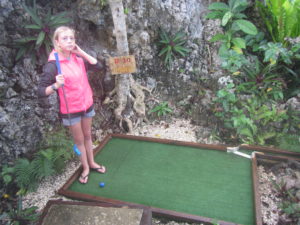
Putt-putt with a Beautiful View
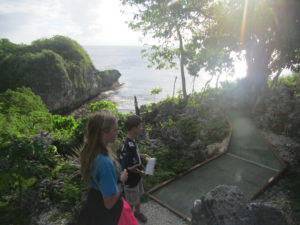
Our Hike: The Arch
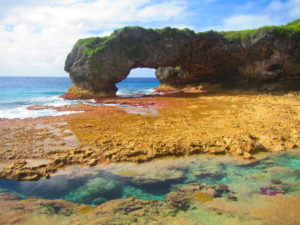
The View of the Arch from the Cave
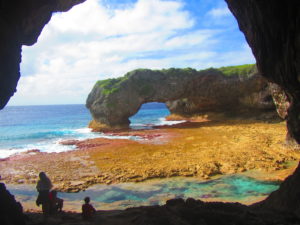
Hiking on the Volcanic Trail
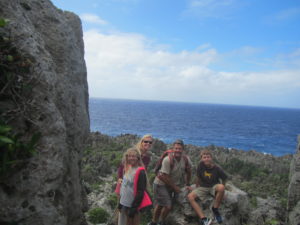
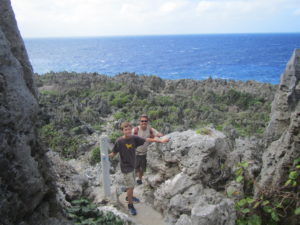

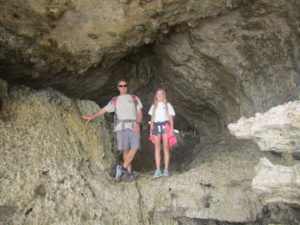
One of the Cool Caves on Niue

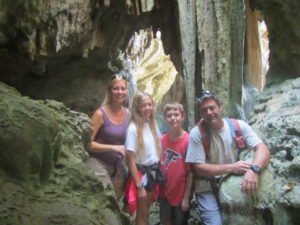
Another Volcanic Hike Photo

Our Flat Tire–At Least Dan Got to Show the Kids how a Tire is Changed!
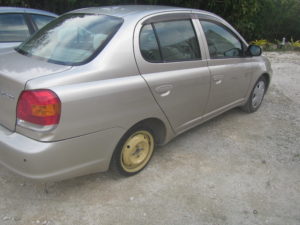
Ari Climbing on the Cave Wall
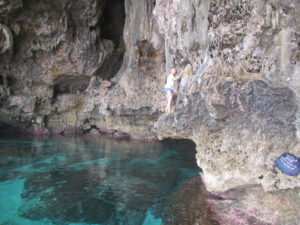
A Shrimp Underwater in this Lagoon
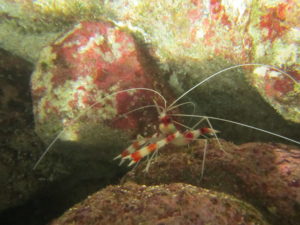
The Ladder we Had to Climb Down (and then up!)
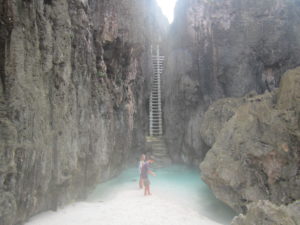
Cool Cave Formations


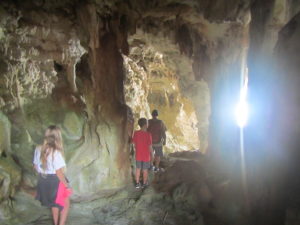
Volcanic Hike

Beautiful Lagoon That Ari and Dan Snorkeled
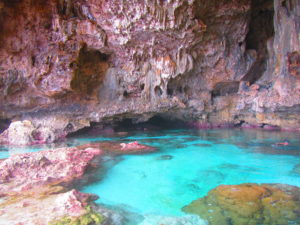
My love of Niue suffered some setbacks after about a week when the winds shifted and caused an immense amount of swell in the anchorage. We had a solid mooring ball so we didn’t have to worry about coming loose or someone dragging into us, but it was ROUGH being out there on the boat. Ari and I didn’t feel great out there. I was pretty seasick and I wasn’t even sailing. That seems inherently unfair. I suffer through it when I sail, but in port, I should get a break from it, shouldn’t I? In hindsight, I wish we had just gotten a room in town for the few nights that the anchorage was so rough.
Stopping for a Cocktail
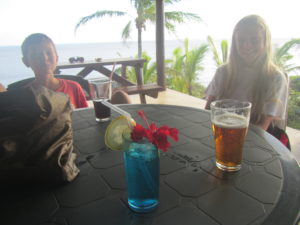
The Kids Exploring

Dan and I had intended to go on a date night, but understandably, the kids didn’t want to stay on the boat with it rocking and rolling so much, so we scratched date night and all went in for dinner, despite the roughness of the dinghy ride into shore. That dinner turned out to be excellent, and we dined with Mark and Eileen on Wavelength (from Washington State). The food was fantastic, the company was wonderful, and I didn’t want to leave shore. Finally, we had our weather window to leave Niue, so we checked out of the country and headed on down the road. Next stop: American Samoa.
